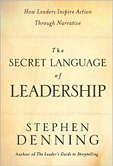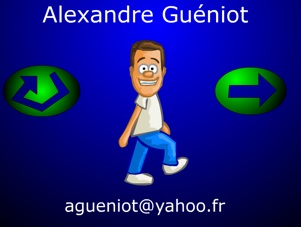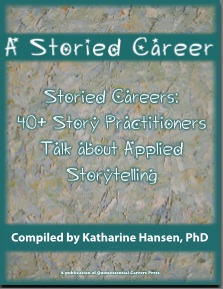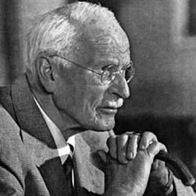I’ve been seeing and thinking recently a lot about the terms:
- cross-media storytelling
- transmedia storytelling
- immersive storytelling
- distributed storytelling
As I read about these terms, they all seem to be talking about roughly the same thing. I figured if anyone knew about the nuances of difference among the terms, it would be Christy Dena, who has focused her doctoral studies on what she describes as “a new form of storytelling & gaming” (which, I believe, she is currently calling “cross-platform” storytelling).
Indeed, she does offer an answer, and my puny list above, it turns out, is just the tip of the iceberg. Christy provides a lengthy list of terms that she states are either the equivalent or sub-sets of cross-media.
I don’t want to steal her thunder by repeating the whole list — and I also tend to shun those that directly reference games because I’m just not into games — so here’s a very abbreviated version of her list (in addition to those at the top of this entry):
- Convergent Storytelling
- Distributed Narratives
- Intermedia Storytelling
- Mobile Narratives
- Multimedia Stories
- Multi-Platform Storytelling
- Polymorphic Fictions
- Situated Narratives
- Synergistic Storyscapes
- Synergistic Storytelling
I find these genres fascinating and keep wondering what applications they may have beyond what we’ve already seen. But before I get into that, it’s useful to come up with some sort of definition and basic understanding.
Henry Jenkins, who champions the term “transmedia storytelling,” offers a good explanation in the video I embedded here. Jenkins also offers a good definition, explanation, and copious resources in the Transmedia Storytelling and Entertainment Syllabus for the course he’s teaching this fall at USC, which he posted on his blog:
We now live at a moment where every story, image, brand, relationship plays itself out across the maximum number of media platforms, shaped top down by decisions made in corporate boardrooms and bottom up by decisions made in teenager’s bedrooms. The concentrated ownership of media conglomerates increases the desirability of properties that can exploit “synergies” between different parts of the medium system and “maximize touch-points” with different niches of consumers. The result has been the push towards franchise-building in general and transmedia entertainment in particular.
A transmedia story represents the integration of entertainment experiences across a range of different media platforms. A story like Heroes or Lost might spread from television into comics, the web, computer or alternate reality games, toys and other commodities, and so forth, picking up new consumers as it goes and allowing the most dedicated fans to drill deeper. The fans, in turn, may translate their interests in the franchise into concordances and wikipedia entries, fan fiction, vids, fan films, cosplay, game mods, and a range of other participatory practices that further extend the story world in new directions. Both the commercial and grassroots expansion of narrative universes contribute to a new mode of storytelling, one which is based on an encyclopedic expanse of information which gets put together differently by each individual consumer as well as processed collectively by social networks and online knowledge communities.

The Blair Witch Project and The Matrix are often cited as seminal examples that spawned transmedia storytelling. And just as an aside, a wonderful piece from five years ago — a great story of storytelling — is Exocog: A case study of a new genre in storytelling (back when transmedia/cross-media/immersive storytelling was indeed a new genre) about a transmedia project undertaken independently of a film studio — yet as an extension of the film Minority Report. The project was something like what Jenkins calls a “grassroots extension,” except that the organizers were not “fans” per se. Jim Miller, who wrote the piece, cites the old Apple HyperCard program as one of the earliest roots of using computers and the Internet for storytelling. I never grasped HyperCard yet thought it was cool.
Given that I’m not into games and that storytelling in movies and TV is also not at the top of my list of interests (mostly because other writers/bloggers have those genres well covered), I’m interested in other applications that transmedia/cross-media/immersive storytelling may have. Can they be used for nonfiction stories and for individuals (say, in job-hunting and personal branding)?
John Thompson, senior copywriter at One to One Interactive, answers the nonfiction question when he cites “one of the most successful social media-enabled stories going — the Obama presidency.”
Emerging multimedia journalism also is applying transmedia/cross-media/immersive storytelling to nonfiction. With regard to the way the aftermath of the Iran elections was covered through social media, Brad King writes:
… in this distributed world, the best storytellers should be out there aggregating all the information, creating pages where the information can be pulled, mapped and searched in a variety of manners; where information can be set up top by users; and then knowledgeable folks can provide their own context to what is happening.
(King is concerned both with the way this kind of storytelling should be archived and the perils of “remixing” storytelling that result in incidents such as Maureen Dowd’s failure to attribute a paragraph in her column to its rightful source.
And Kfir Pravda flirts with the individual question by writing:
Immersive storytelling is the use of social web and online video to tell a linear fictional story, through the social activities of the characters. … but what about the stories that happen to people around us? People in real life? Did you ever read someone’s Facebook status messages and learned about his personal stories through it? Did you ever read personal blogs and vlogs and felt that you are witnessing a real life story? This is the basic concept of immersive storytelling — the movie theater is replaced by Facebook and Twitter profiles, blogs, and personal vblogs.
So, we can probably say that some people are heavily involved in transmedia/cross-media/immersive storytelling by having personal Web sites, blogs, videos of themselves of YouTube, photos on Flickr, profiles on Facebook and Twitter, and so on. Various feeds, lifestreams, and storystreams are likely a good way for these various media to tell the individual’s story cohesively. For functions like personal branding and job-seeking, a certain degree of linearity is probably desirable.
And perhaps a degree of interaction is desirable. I’ve written before about Kevin Sablan, whose “storystreaming” vision focuses on how others interact with the story’s protagonist: “every story includes multiple characters, events and plot. A storystream platform needs to document a the events of a story, not a person.”
Although “Johnny Blank” (“a storyteller hell bent on discovering ways to harness emerging technologies to share stories with new audiences”) writes in the context of film and blurring the lines between filmmaker and audience, his words apply to those interested in telling — and participating in — nonfiction and individual stories acorss platforms:
For the first time since ancient cultures, where stories were passed down from generation to generation through verbal communication (around fires etc), the world has now found a new, communal space to share and grow its stories that represent humanity. … In other words, stories are no longer simply stories, they are world views that will evolve with discussion, creation, and review.








